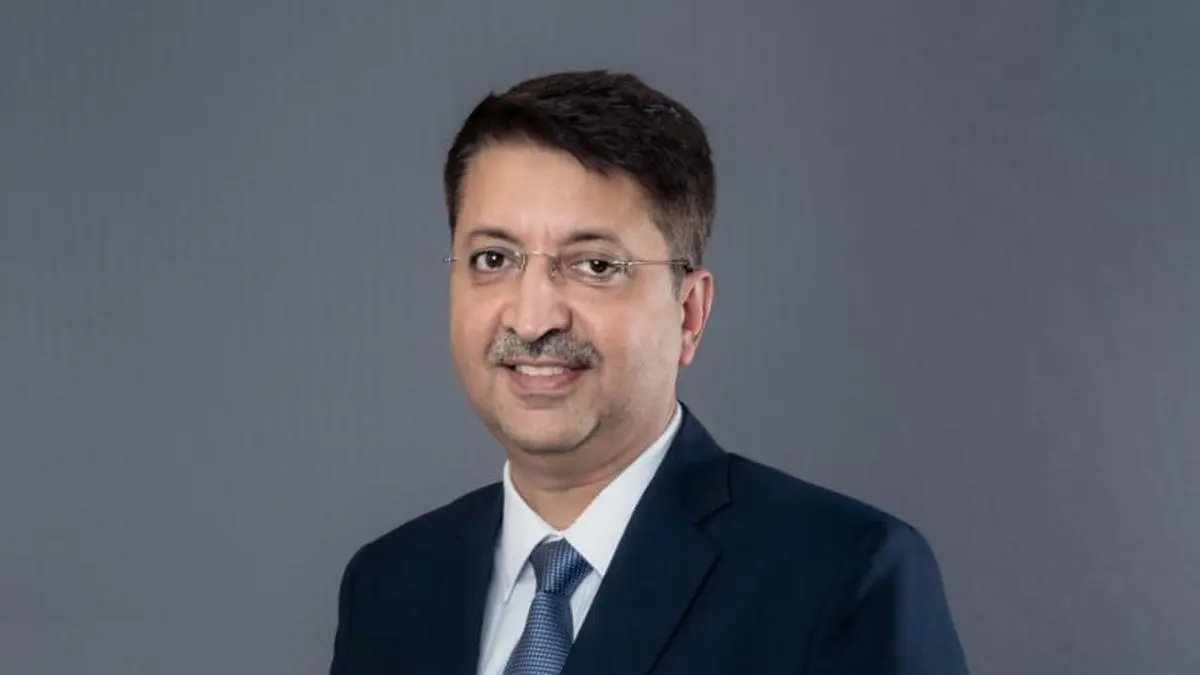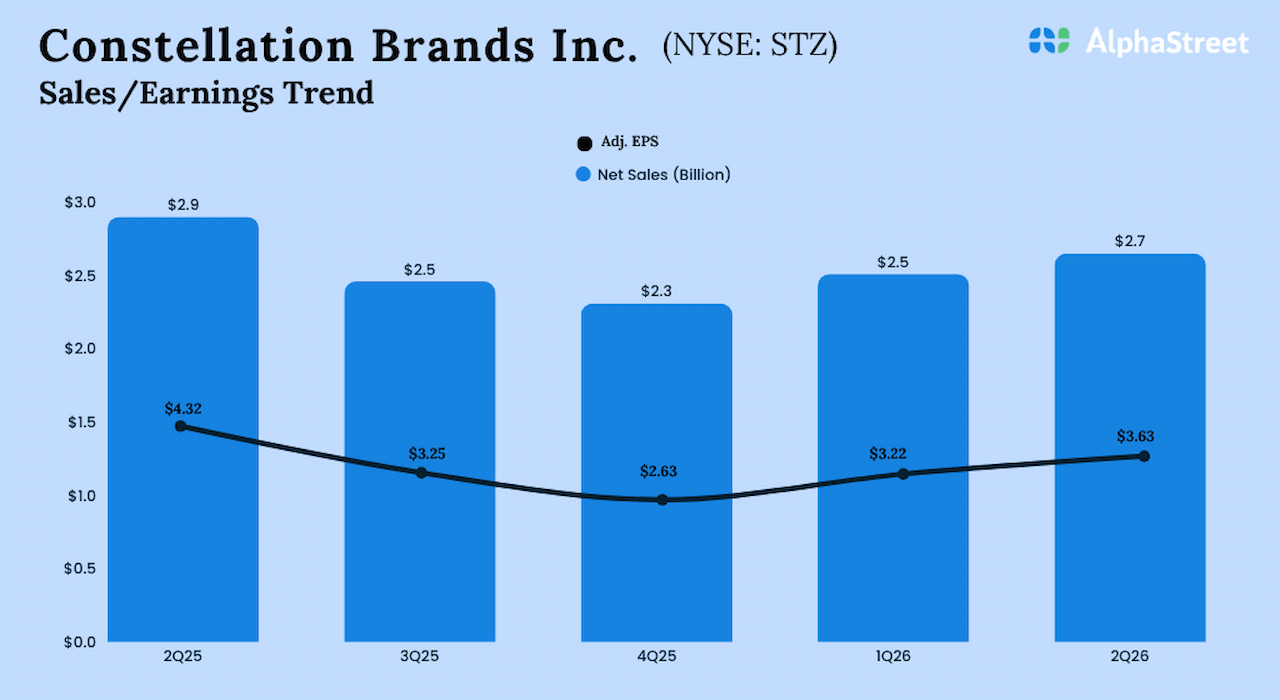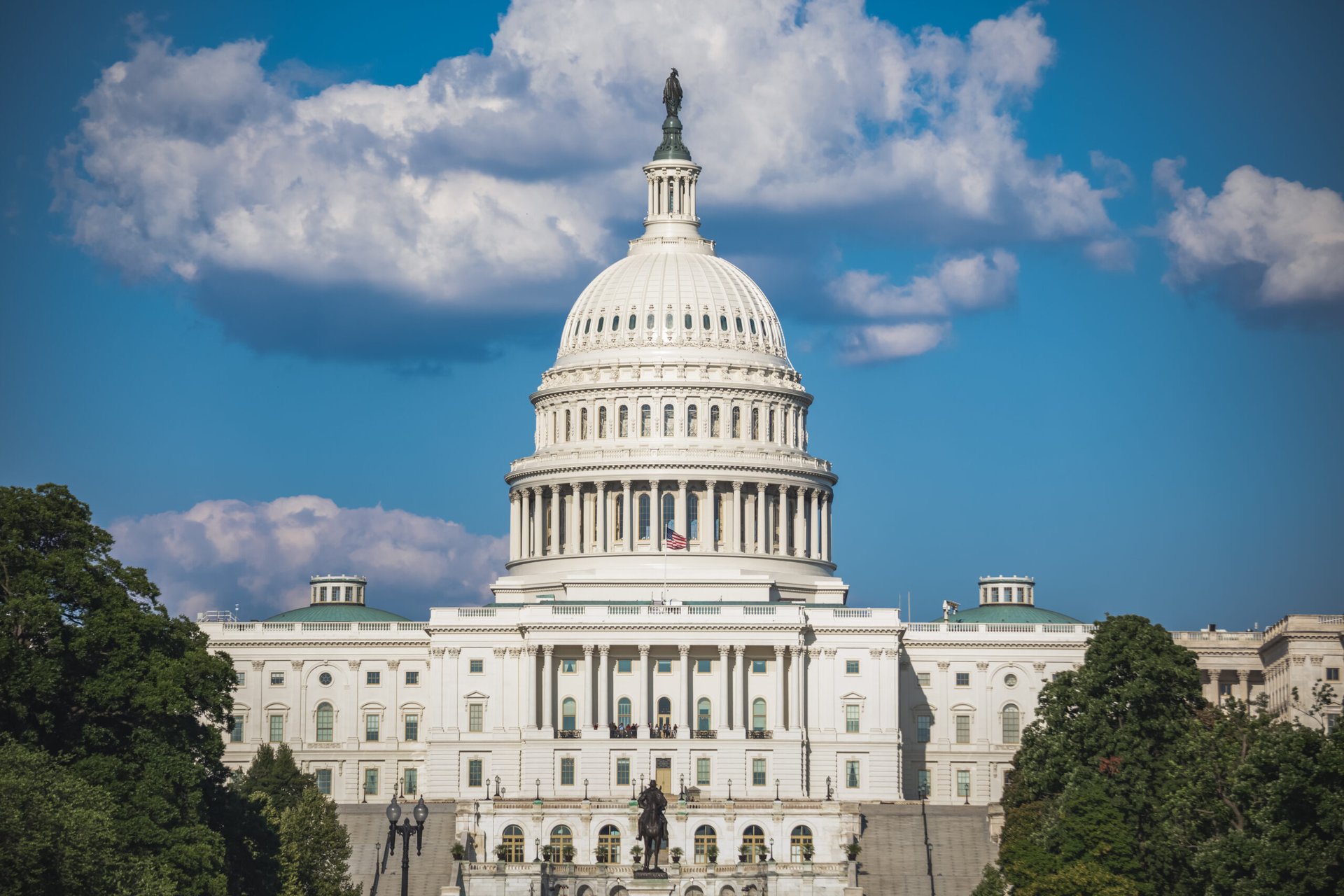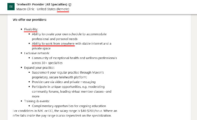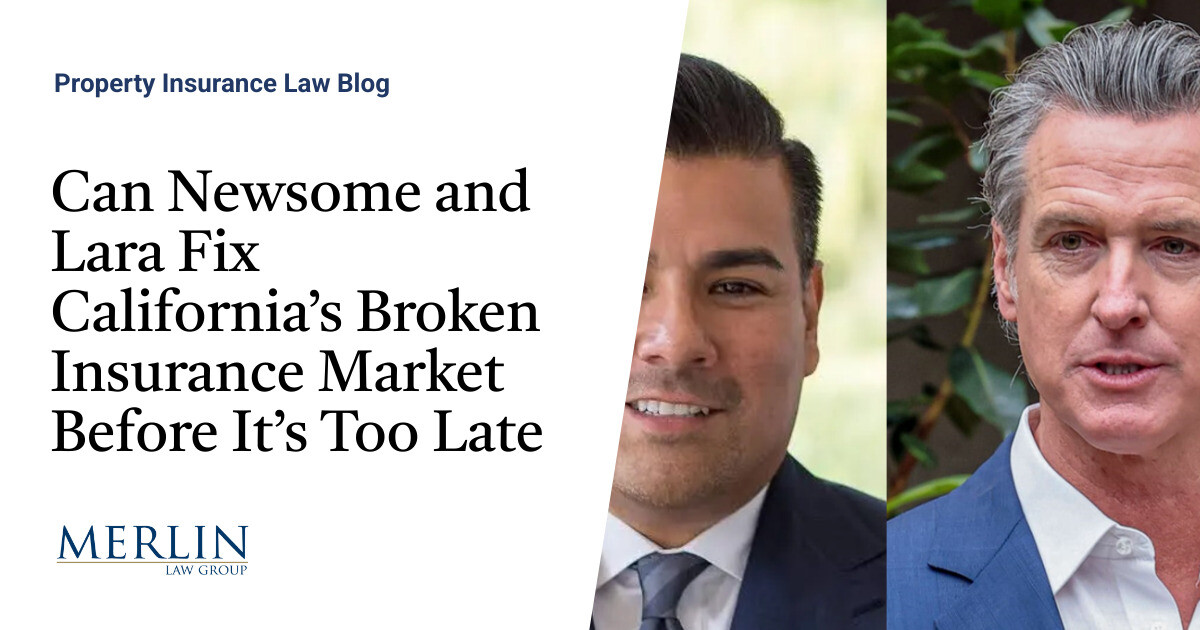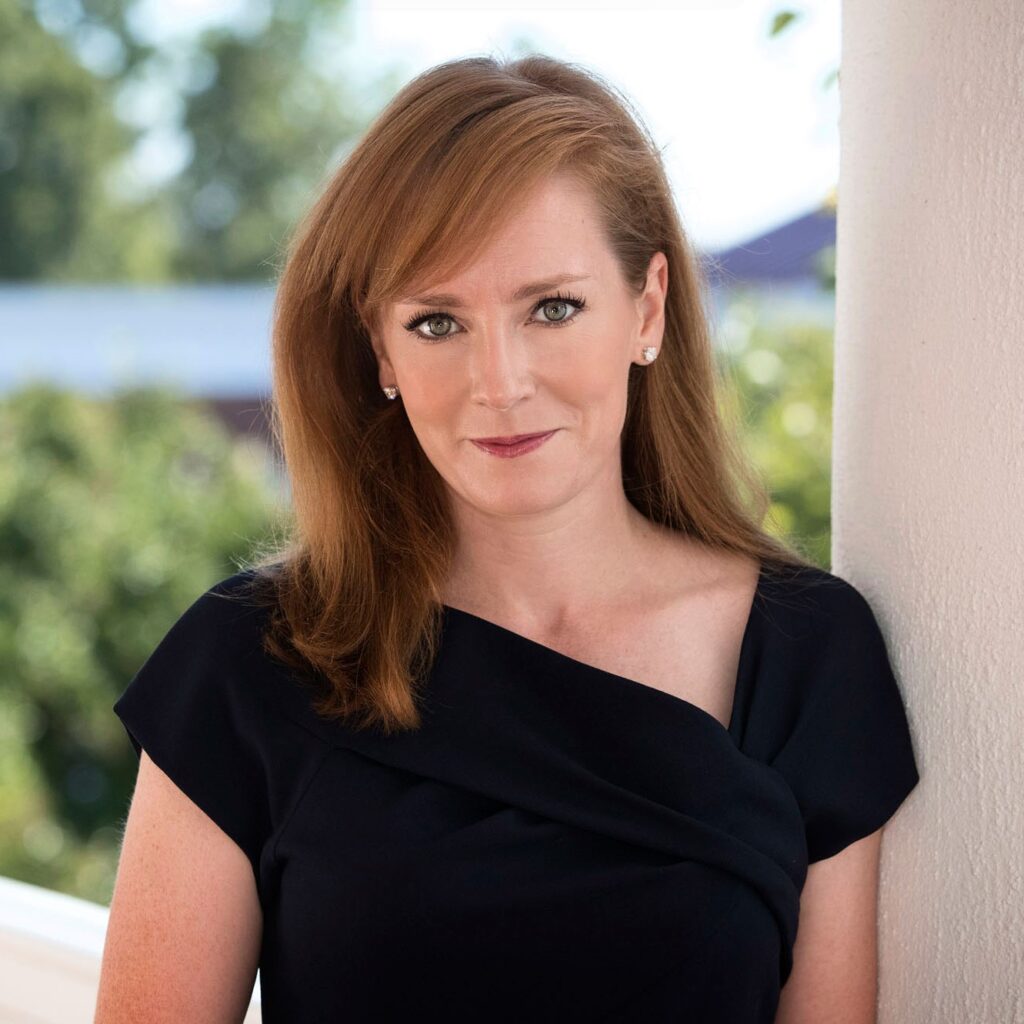Episode #468: Kate Moore, BlackRock – How to Invest in Consumer Disruption, Natural Resources, & Automation
![]()
![]()
![]()
![]()
![]()
Guest: Kate Moore, Managing Director, is a member of the Global Allocation investment team and Head of Thematic Strategy. Her investment mandate includes identifying opportunities to exploit structural change, policy evolution, and dislocations across global industries.
Date Recorded: 2/8/2023 | Run-Time: 55:37
Summary: In today’s episode, Kate shares her framework for looking at markets from the perspective of a “macro equity investor.” Then she shares her view of global markets today and what key investible themes she’s focused on today. We touch on changing consumer habits, natural resources, and automation.
Comments or suggestions? Interested in sponsoring an episode? Email us [email protected]
Links from the Episode:
- 1:40 – Intro
- 2:12 – Welcome to our guest, Kate Moore
- 7:31 – Kate’s macro-equity framework to analyze markets
- 9:29 – Applying Kate’s framework to the current state of markets today
- 14:19 – Prevailing thoughts on the rising bond yield environment
- 18:01 – Thematic frameworks, disrupting the consumer, and using them to invest
- 24:14 – How often she has to revisit her investments and update them accordingly
- 26:21 – Her longest running theme and how many she tends to track at once
- 28:38 – Overview of Kate’s thoughts on global resources
- 31:30 – Casting a pretty wide net globally when monitoring themes
- 35:02 – Kate’s take on market sentiment today
- 40:12 – Industrial automation and Kate’s perspective on automation in general
- 41:41 – Her view on China evolving over the past couple of years
- 45:20 – Something Kate believes that most of her peers don’t
- 47:20 – Things she’s reading lately; Wayward; The Second Mountain; The Invisible Life of Addie LaRue; The Three Body Problem
- 50:51 – What else Kate is thinking about as she looks out to the horizon
Transcript:
Welcome Message
Welcome to the Meb Faber Show, where the focus is on helping you grow and preserve your wealth. Join us as we discuss the craft of investing and uncover new and profitable ideas, all to help you grow wealthier and wiser. Better investing starts here.
Disclaimer
Meb Faber is the co-founder and chief investment officer at Cambria Investment Management. Due to industry regulations, he will not discuss any of Cambria’s funds on this podcast. All opinions expressed by podcast participants are solely their own opinions, and do not reflect the opinion of Cambria Investment Management for its affiliates. For more information, visit cambriainvestments.com.
Meb
Welcome, my friends, we got an awesome show for you today. Our guest is Kate Moore, BlackRock’s head of thematic strategy, and a member of BlackRock’s Global Allocation Investment team. In today’s episode, Kate shares her framework for looking at markets from the perspective of a macro equity investor, and then she shares her view of global markets and what key investible themes she’s focused on today. We touch on changing consumer habits, natural resources, and automation. Please enjoy this episode with BlackRock’s Kate Moore.
Kate
Yeah, thanks, Meb. Psyched to be talking to you today.
Meb
For the listeners, not watchers, you can see a little snow in the background. Where do we find you today?
Kate
Yeah, I’m broadcasting live here from Jackson Hole, which is, as far as I’m concerned, the best place in the country.
Meb
I’ve been to Jackson multiple times, and I’m kind of a jinx when it comes to Jackson and snow. I think I, for whatever reason, have timed it somewhat poorly every time we’ve been there, and the last conference, last thing I ever did pre-COVID was investment conference in Jackson. I think everyone went home sick. It was the last week of February, 2020 or first week of March, I think. Magical place, though. How long have you been frequenting there? You’re not from there, are you?
Kate
I didn’t grow up here. I grew up in the East Coast in New England, kind of Vermont and Connecticut, but my first trip out to Jackson was in 1993. I was hiking or doing a big backpacking trip on the Lewis and Clark Trail, and we stopped here for a couple days kind of to regroup. I think they wanted us to shower, to be honest. And I fell in love with this location and the Snake River, and then started coming out here very regularly over the last 30 years. Finally bought my house almost five years ago.
Meb
Very cool. Let’s talk markets. You’re a fellow wahoo. What was your origin story? You didn’t start out in markets, didn’t you? You were a political undergrad. What’d you study?
Kate
Yeah, I was in a special program at the University of Virginia called Political and Social Thought. Since I have a bunch of PST friends from other classes before and after me, I can say that it’s a pretty nerdy group. Tends to be a really small group of people, 20 to 25 people, and we get to study some pretty incredible stuff through seminars and then also take a bunch of graduate level classes. But political and social thought can be what you want it to be. I was really into political theory, political philosophy, and I got more into political economy as I went on through my studies, and that’s really how I started getting into markets. After UVA, I worked in consulting for a spinoff at McKinsey for a couple years, and it was a great experience. I knew pretty soon after starting that I didn’t want to be a consultant for life, so it was a pretty tough lifestyle, and I was thinking to myself, what do I love?
What am I good at? What do I want to do? And I love academics. My mom is an academic. I love research. I had all of this sort of vision of myself that was like, I’m going to be a professor, I’m going to write some books, and I’m going to spend all summer climbing while I do research. And so I ended up applying for my PhD programs, and I went to the University of Chicago. I did not finish my PhD. Turns out I was a capitalist and was anxious to get back to making money, but there, I also did political economy.
Meb
And so what was the first stint after that?
Kate
Yeah, so at University of Virginia I had sort of stumbled onto my first year studying Mandarin, and I was fluent in Spanish from an early age, so I thought it’d be fun to take Chinese when I was at UVA. And actually, the study of the language got me really interested in Chinese political thought and Chinese culture. So I ended up taking these cool classes on China, and when I went to grad school, my focus was really on emerging market capital development and also really understanding China even better. And I used my Mandarin skills and stuff like that to do a bunch of research. So I was really interested in the developing world and development models that looked really different from the US or from Western Europe. And so I had this idea that when I finished Chicago, when I finished my master’s, that I was going to work at a think tank or an NGO, do something really nerdy.
And shortly after, this is kind of a fun story, I was waiting for my master’s thesis to be graded, and before I could walk, so I had maybe a month or something. And I decided I was going to go to Costa Rica to surf camp, because I did not know how to surf and that seemed like a logical thing to try and learn. So I was down there, and I came back and I was all sort of blissed out, torevida. I got this call from University of Chicago and they basically said, “Hey, Kate, we have a inbound request from the chief investment officer of Morgan Stanley investment management, and they’re looking for someone with a policy kind of politics, history, economics background, not an MBA.”
And I said, “Hey, guys, I’ve thought a lot about this. I really want to go the NGO route.” And they said, “Can you just do us the favor of going on the interview so we’ve put up a good candidate?” And I went in and met this macro team at Morgan Stanley, and they were so thoughtful. I loved that they were approaching problems from a multitude of different perspectives, from history and philosophy, economics, understanding of the world, and it was really my introduction to macro investing. I fell in love with it. I think I accepted my offer two weeks later.
Meb
What’s the general framework or the lens from which you kind of view the world? And then we can dial in to various parts of what’s happening today in 2023.
Kate
So I call myself a macro equity investor, and so in practice, I think that means a lot of the equity investors or dedicated fundamental model building bottoms up type analysts think I’m very macro. And then the true macro investors think I’m very equity. It’s an interesting place to bridge, and actually, it’s proven to be incredibly useful throughout the course of my almost 25 year career at this point. Sometimes I worried that I wasn’t specialized enough in one thing, either being macro or being bottoms up. But the truth of the matter is I do invest across other asset classes as well if the equity expression doesn’t make a lot of sense. But if you go back over the last 25 years, the S&P has returned something like 460% over that period of time. So a huge amount, especially if you kind of got and stayed invested.
But if you take out the FOMC days from your dataset and then the day before, maybe that’s like 430 days, I think, out of like 6,500 possible days, the S&P would be trading sub 2000, like 55% lower than it is today in February of 2023. The macro has really moved the market, and it’s really important, I think, when I tell this to young people as they’re starting off in their careers, and if they have aspirations of being an investor for their lifetime, that you can’t stay too specialized. You have to be able to understand the macro, you have to understand geopolitics, policy headwinds, policy tailwinds. You have to understand positioning and sentiment. This is not just about modeling a company’s cash flows.
Meb
So let’s start to dig in a little bit from this broad sort of macro equity framework. What’s it mean for the world today? We can maybe go through case studies or just kind of talk about it generally, but how does that framework apply to what’s going on now?
Kate
So I always start with the macro, frankly. I think if you don’t have a great sense for growth and policy inflation, it’s pretty hard to figure out where the fast rivers are going to be and where you’re going to see the best potential growth. So I start there, and then I also think about where there are interesting changes in markets. We can talk about some of my thematic views in a moment. And then I spend a lot of time, frankly a huge amount of time, on positioning and sentiment. I mean, this is an area that you can really, really lose your shirt on if you’re not aware. And I like to say it’s important to know not just what people are saying, but also how they’re positioned, and then how they think other people are positioned. That’s going to really impact their trading and their allocations in the near term. Valuation is part of my process, but you might note I’m listing this number four. It is part, but not the starting point, of my process, in part because valuations can run hot or run cold for extended periods of time.
We’ve done a bunch of analysis, and this made people uncomfortable at one point when I put it out there to my BlackRock colleagues. But in holding periods kind of less than three years, even in a market like the US, which we have great history and great depth, valuation explains very little of your return over that period. That’s because stuff can stay expensive or stay cheap for years at a time. If you have a investment framework that holds for 10 years or seven to 10 years or more, valuation has historically predicted more of your returns, but not always. And I think we need to be conscious of multiples, but we also need to be conscious of really what’s going on in the macro and what’s going on in positioning and sentiment first.
Meb
What does the world look like today? It’s been a weird couple years since last time I was in Jackson. I personally feel like I’ve seen some of these market styles in my short career, or even historically, it’s looked a little different. Talk to us. What’s going on?
Kate
Yeah, the market does look really different, but I would actually argue, Meb, that it’s pretty exciting right now. This is actually a really interesting time in the market. There was a long period of time, the entire period of quantitative easing and extraordinarily accommodative monetary policy and anemic, but still positive, economic growth, where frankly it was a set it and forget it strategy. You saw index outperform active decisions on a regular basis, and people tried to get too cute with the market or tried to time things. I actually think the macro regime here has changed in a great way, not just because policy rates are meaningfully higher and we’re living with a higher inflationary environment, but also because there’s greater differentiation and dispersion within the market than there has been in a long time. Last year, we all know the story. It was a massive washout in terms of risk, you got a huge amount of de-rating from secular growth companies as policy rates adjusted higher.
But even this year, where the S&P is up close to 8% for the year, global equities are up over 8%, there’s a huge amount of activity and dispersion below the surface, and I think that’s going to be the regime for the next couple years. We may see more dispersion in terms of monetary policy decisions as well, so that the macro environment on the ground in different markets is going to change. And we’re going to see, I think, companies that have invested well in technology, they are thoughtful around cost controls, particularly in a rising inflation or sustained high inflation environment, outperform their peers that have been really flatfooted when it comes to those decisions. And I think we’re going to see great competition between the asset classes, which also means you have to be super high quality growth to outperform.
I know you had my boss and partner on, Rick Reeder, I think maybe six months ago or something, and Rick and I have this conversation every day, because there are many more attractive investments in fixed income than there had been for a number of years. So the bar for equities is higher, but that’s also exciting, because it makes us do a little bit more work. I think we have to be more tactical in this environment, and we really have to separate the wheat from the chaff.
Meb
All right, so there was a lot we can dig into there. I think the big topic for most investors coming into this year was obviously a lot of assets being down last year, 60/40 bond stocks sort of having the dual downdraft, but really the discussion was pretty heavy on inflation and interest rates coming up pretty dramatically, and how that might affect the world. Is that something you guys like at this point? It feels like the consensus is that inflation is moderating. I think last I saw, some of the expectations were down to 2, 3% within a year, which seems pretty astonishing, in the US, maybe not elsewhere but within the US. But does the environment from 2022, and as you mentioned this pretty quick either a bounce or new bull market, I don’t know which, but one of them or both. What’s sort of the prevailing thoughts on the extension of this inflationary rising bond yield environment? Is it y’all’s view that it’s going to kind of settle down, or is it higher for longer? What’s the general thoughts?
Kate
Yeah, I mean, we debate inflation and all the components of inflation a lot across the BlackRock macro and also taking in some of the micro views, as well. I think there is this very black and white, sometimes binary view, in the market. If someone says, for example, “I think we’re going to have more of a disinflationary environment over the course of 2023,” disinflationary means still rising prices, but at a lower rate, people will say that’s not necessarily true, or it’s universally true. And I think we have to understand that this disinflation trend over the course of 2023 is not going to be linear. We’re going to have bounces in higher prices in specific segments of the economy or the market, and we are going to see others decline more rapidly, and then they may reverse course over a period of months. Just because we’re starting to see some disinflation does not mean that all prices universally everywhere will fall in lockstep.
And I think as we take in more data, that could kind of challenge the narrative that inflation is coming down, but we need to think through one data print and kind of look over a two to three month or a three to six month horizon. In that case, amongst my team and across our platform, we feel pretty confident that there will be persistent disinflationary movements. Will we get down to two to 3%? I think that’s maybe overly optimistic in 2023. I think we need to accept that inflation will likely remain higher than it was certainly in the pre pandemic period, or in that kind of pre pandemic decade. So getting used to more price pressure, particularly when it comes to wages and particularly driven by what we think is going to be persistent tightness in the labor market, is going to be really important. Not just for analyzing the macro and thinking about where policy is, but also in trying to figure out which companies can maintain their margins. How are they controlling their labor costs? What are they doing to invest in efficiencies to kind of reduce their total cost of an employee?
Meb
Yeah, well if ski town and the US inflation is any guide, lift tickets, and more importantly, cost of ski instructors… I have a five year old, so this is very near and dear to my heart. I want to start a platform that connects the local bro bras that are great skiers with kids, because man, it’s pricey. Japan was cheaper, but part of it may just be the yen being it sort of generational lows. All right, so let’s dig into some of your themes. You’re big on themes, I’ll let you choose, but one of your first that we saw you talking a little bit about here and there is disrupting the consumer. What does that mean?
Kate
Okay, well let me just step back a minute, Meb. I’m going to kind of talk to you about my thematic framework, because there are a lot of people who claim to be thematic investors right now, and everyone is a slightly different flavor. So let me share kind of how I approach this, which is I think about thematic investing in three buckets, right? There’s the first bucket that you may see represented in, say, a thematic ETF. That is the slow bleed, incremental change in some behavior or the slow adoption of a technology, something that will play out over a number of years. That is a totally valid way to invest thematically, but you just have to kind of hold these ideas and these themes for longer periods of time. There’s a second bucket which is more around disruptive change, like a significant change in policy, the introduction of a technology, a change in geopolitical relationships that lead to a set of companies benefiting disproportionately from some catalyst or not.
I mean, it’s also on the short side as well, but I would call that more disruptive change. And it doesn’t mean it all has to take place in the course of a week, but it’s not this five to 10 year incremental change that I’m talking about in bucket one. And then there is bucket three, which is around macro themes, and this is going to be around business cycle stuff, policy decisions on the monetary side, and significant shifts in terms of asset allocation. I would say I spend all my time on buckets two and three. Where is there disruptive change, and where does the macro play out thematically in the equity market?
Meb
All right, well let’s hear about it.
Kate
Okay, so on the consumer side, this is something we think about a lot. Where are consumer preferences changing, and where are they being forced to change? The easiest and most straightforward example that we all knew was that a shift to e-commerce was happening for many years pre pandemic. That was falling into bucket one, incrementally more spend happening with online retailers. And then of course, the pandemic accelerated and significantly led to a step change that fell into bucket two. So sometimes these themes can bridge these different buckets, but we are seeing a significant preference change for consumers in terms of how they spend their money, what they upweight. This is not just a goods versus services, but it is also what is the status object that allows me to broadcast to my social media followers? And so you you’re just seeing consumers change their preferences in how they spend.
Again, that doesn’t mean anti goods, but it means a very specific type of goods, and they tend to be more price sensitive in commoditized goods and more specific around, say, luxury brands, for example. So there’s opportunity there, but we can also take consumer preferences one step further, which is to say, what do they want when it comes to their big, durable purchases? Does energy efficiency matter? Does it matter more in the US than Europe? Probably not at this point, but it also matters, I’d say, for European consumers that not only do these goods, especially white goods and appliances and stuff like that, meet regulations, but also there’s a bit of a competition to be greener. So there’s an opportunity to invest across the consumer in a more nuanced way based on each region, not just based on policy, but also based on society.
Meb
How does that sort of theme get investible? Where do you then take these ideas, which are pretty broad and sweeping, and then start to dial that down into actual? Do you approach it as buckets of securities? Do you approach it as individual? What’s next?
Kate
Yeah, let me give you an example of a specific theme and how I thought to implement it, without giving you all my positions. But for a considerable period of time, we’ve been talking about the transition to EVs. There was a slow bleed part of that, and then there was more policy, catalyst driven transition to electric vehicles in China and in Europe. And we took a good look at this, and I started investing in it in early September of 2020, so some time ago, now. It’s been one of my longest held themes in the portfolio at the time. And I said, I’m never going to pick the car that everyone loves. I can’t pick the OEM that is going to outperform, because there’s going to be a lot of competition there. But instead I went up the supply chain, and I went up all the way.
So early on, I was investing in lithium, and then the battery makers, on a global basis, and then the chips that specifically go into the EVs. And I chose not to invest at all in the OEMs, or even the dedicated EV car makers. And the way that looks is then I end up with a basket, it’s usually five to eight securities, where I’m taking some concentrated idiosyncratic risk, but also diversifying across an idea. I also recognize I may not be able to choose the winner, especially in these kind of second bucket of themes where there’s big discontinuous change, and it may make sense to buy the two best names and let them fight it out. Because if the pie is growing in an enormous and rapid way, they’re both going to win.
And so I will approach investing this way, which is come up with the idea, do deep dives in terms of the research, figure out who the number 1, 2, 3 players are in each parts of the supply chain, and then construct based on liquidity, market cap, positioning, and some of our kind of more qualitative assessments of corporate teams.
Meb
How often do you have to revisit these ideas? So you say, okay, I’ve identified this bucket. Do you set sort of a time horizon for this investment? And then how do you update it on either, Hey, it’s worked out, these have run too far, or this is something that maybe the macro picture has changed? How do you approach altering your views, both either positive or negative, on this kind of implementation?
Kate
Yeah, it’s an iterative process, Meb. I mean, there are some themes I put on in the portfolio and I thought to myself, okay, this is a six to nine month theme. I expect these catalysts to play out in earnings, and people will position into these names over that period, and then I’m going to get out. But then there’s maybe a series of positive catalysts. And that’s what I would say for this EV theme I’m mentioning. It wasn’t just sort of policy in China and Europe increasing demand for electric vehicles, but also consistent supply constraints on the lithium side. And then the US joined the party. And so we’re constantly reviewing the macro policy and also micro catalysts for each of the names in the basket. And then we will change and update and edit the weights on a regular basis. There’s another software basket I’ve had on for a pretty long period of time on my longer standing trades, and that’s around cybersecurity.
And this theme I put on in January of 2020. Was pretty excited, frankly, about this theme. And of course then the pandemic hit, and the need for better security software for companies all over the world exploded. So within that theme, though, we have up weighted and down weighted different names based on which segments they play in, what releases of software they’ve had, channel checks we’ve gotten. So it hasn’t been a set it and forget it theme where I just bought five or six names and said, Hey, I like this idea over the medium term. It is a actively managed tight group of names.
Meb
What could be the longest running theme? Is there something where you’re like, I’m going to put on a position and it’s lasted five, 10 years, or is it usually just a few years in? And how many of these traditionally are you kind of tracking up in the air that you’re positive on at any one time?
Kate
Yeah, I would love to say I have 15 different themes on, but the truth of the matter is my personal bandwidth is more like five themes, and maybe two of those are macro, and then three of those are kind of more micro or specific industry or policy related. I’ve never held a theme for five years. I won’t say it’s impossible. It could be the same theme name with a lot of different constituents over that period. So let’s say that’s a real possibility. But holding the same set of names seems really unlikely, because these companies are going to move in fits and starts. There’s going to be a lot of specific and idiosyncratic issues with each of the different companies, and I’m going to have to pay close attention to that. But you asked the question when you started, Meb, around valuation. I think this is really important, because a number of the themes that I invest in would be characterized as more growth themes. They are higher octane, higher energy, higher multiple themes in general.
And in some conversations I’ve had with fundamental analysts, both within BlackRock and outside, they’ve gotten a little bit itchy and said, “Yeah, these things are trading at the top end of the range.” And I said, “Yeah, but this is a discontinuous change,” either in this technology or demand or support for this idea. So they can blow through whatever their historic range of multiple was, and actually maybe grow into that multiple as people realize the earnings and sales power.
Meb
I was going to say, as a trend follower in a lot of our momentum work, if somebody comes to me and says something’s trading at the top end of the range, I say, “Good, that’s a good thing.” We did a paper in the pandemic, which I think is probably our least read paper. I can’t even remember the title, so few people read it, but it was like, is investing at all time highs a good idea? No, it’s a great idea. But it is basically talking about thinking in terms of trend and momentum, but historically it’s a much better idea on a pure price basis than investing in things that are going down or near the lows, valuation agnostic. All right. Well, that’s one. You mentioned you always have a few themes. Let’s talk about another one. Anything. We’ll let you pick and choose. I know what’s in the quiver, but we’ll let you pick one. What other themes are you kicking around?
Kate
Well, let’s talk about global resources. How about that? Global resources. And the reason why I want to talk about resources, this has actually been an area that I’ve done work on my entire career. You may have seen in the first half of my career I was kind of dedicated emerging markets, and during that time, emerging market equities were pretty much banks and resources if you wanted any liquidity. So I spent a lot of time learning those two areas. But resources is something, after a number of years where I probably had less allocation, we really revisited, not just because of the pandemic, but because we have experienced something that in the 20 years previous it felt like we had never seen, which was a massive amount of supply discipline and capital discipline from these companies. That’s originally what kind of flagged this for me, not an economic rebound in and of itself, whether that was a positive icing on this cake, but really a strong and consistent fundamental shift in how these companies were being managed.
And so, got excited about looking at some of the diversified minors and originally put some of that on, to be honest, a little early. And it was a time where people weren’t really interested for either ESG reasons, or because they were focused on more reopening trades. They didn’t take a good look at some of the minors and the natural resource companies. And then we started to see these results really play out and really raise some flags for a lot of investors. I have changed what’s in that global resources bucket a large number of times over the last couple years. So originally it was kind of diversified minors. Actually, at the time of Russia’s invasion of the Ukraine, I increased my exposure to aluminum. We knew the energy costs were going up, and this started, of course, with oil prices rising in the fall of 2021, but was accelerated, frankly, by concerns around overall aluminum supply.
So buying a bunch of aluminum producers that weren’t just nat gas dependent was quite helpful. I have overweighted some resources more recently as the Chinese economy has restarted, acknowledging that we’re not going to have a big building and construction boom that we have seen in other economic accelerations in China, but that we’re moving off of a pretty depressed level. So there’s been a ton of rotation within a theme like that. And I use options pretty aggressively, as well. Not just to get exposure to single names, but to take in a little bit of income on some of the names that have run well.
Meb
The resources, one of the challenges we talk a lot to investors about is we say it about asset classes, but I think it applies even more to sectors and industries. I say it’s important, but hard, for many to be asset class agnostic. And this applies to sector, being sector agnostic. So many people, I’m a tech bro, I’m a gold mining bug, I’m a whatever. You don’t find many, I mean, maybe some utility people in the retirement space, I don’t know. But some of these sectors, and people become very attached to certain sectors, because as we’ve seen, a great example over time has been tech versus energy and market caps and just these regimes that last a very long time. And as a quant, it’s always curious to me to see what washes in and out of portfolios. And you mentioned, I think an important point is that different geographies and development levels have different market cap kind of steady state sector exposures.
And so emerging markets, you mentioned, historically has certain exposures, but that changes over time, too. Part of it changes because of price and part of it changes just because of opportunity set, but the odd times when value and momentum and trend tend to overlap are my favorite. And we’ve certainly seen over the past year a number, like you mentioned last year in particular, natural resources doing really well, as well as materials and others. I think a lot of investors really are obviously US focused. How do you approach this from a global standpoint? You mentioned emerging markets and your early part of your career. Is that your starting point?
Kate
Yeah, I do look globally on any of these themes. If I’ve got a little bee in my bonnet or we’re doing a bunch of research on an idea, we cast a pretty wide net. I will say that liquidity and market cap are a consideration. There’s some awesome companies I’ve found that are like sub 2 billion market cap, and for the size of our fund is just not really investible for us because we do want to be able to get in and out. So global, with a liquidity and market cap consideration. And then we spend a whole bunch of time learning about the companies and trying to marry what we know about the top-down theme with what these companies are doing. I mentioned management team matters. We really like to talk to them when we can. Unlike sometimes fundamental analysts who interrogate management teams on line items in their financials, we really want to get a sense for strategy and vision and their assessment of competitive landscape, and where they might have partnerships.
That’s the kind of question I ask when I speak with companies, because I’m trying to get big picture ideas, and then I take some time looking at their financials, but again, not spending time modeling a lot on the individual name. But that’s a huge screening criteria. And then I would also say it’s really important to understand positioning and sentiment. I mean, I can’t underscore this enough, it’s such a huge part of my process, because I may have done all this work, but it might be already in the price, because the rest of the market has already figured this out. They are already invested in it. And I have to decide, okay, if current state is in the price, am I convicted enough in future state to say I need to increase my allocation there? So you have to understand how people are talking about an idea, how they’re positioned, and how they think everyone else is positioned, in order to really accurately and effectively size that theme in a portfolio.
Meb
Sentiment is, I think, notoriously squishy for a lot of people. And as we know, sentiment in 2021 certainly is a great use case with the meme stocks and everything going bananas. How do you think about sentiment? I mean, there’s the magazine covers, chatting with your friends on the lifts. Are people talking about AMC or cryptos? Are there any sort of specific quantitative measures you look at, or is it more just sort of anecdotal and survey-based? How do you think about it?
Kate
Yeah, you’re right. It’s squishy, and it’s why I like to play in the sentiment and positioning space, because there is no perfect science to analyzing sentiment. So you have to take a really mosaic approach looking at some real hard data, soft data like surveys, and then heavily leveraging your network to get a sense for what different trading desks are seeing. So examples I would use, this is something I pay very close attention to, actually, are CFO surveys that help me understand sentiments, not just broadly around the economy, around their own business, and then segmenting that based on the industry that they’re in. Has sentiment changed around their assessment of the business relative to the economy over a number of months or number of quarters? Should I be paying attention to that? What is that telling? And I say this because some of our quantitative teams turned me onto this a number of years ago, but apparently you’re supposed to pay closer attention to CFOs than to CEOs.
CEOs tend to be more visionary and strategic thinkers, and maybe more kind of excited about the future. CFOs tend to be more grounded in what’s happening in terms of the real numbers. So the CFO surveys are something I’ll pay attention to. There are investor positioning surveys, a number of the sell side firms, as you know, do this, but they tend be aspirational. Like they can say, “Are you overweight European banks right now?” Of course everyone wants to say, “Yes, I’m overweight European banks because they have ripped this year,” but they’re not testing that against your benchmark, and they’re not making you prove that you actually are overweight. And they don’t tend to show the magnitude of your positioning in any of those surveys. So I say that’s a useful kind of signal. It tells you where people want to be, not necessarily where they are.
And it may, in fact, be a little bit of an indicator of where people may put incremental money. And then there’s a lot of other data that we like to look at, too, which is looking at fund flows, institutional and retail fund flows across a variety of index instruments, ETPs, as well as active funds. When you see significant inflows into active funds like this big allocation into international, like ex-US equities this year, that tends to be stickier money than some of the ETP flows. So, we watch that. And then again, as I said, I heavily leverage my network on the Street and ask a lot of questions of traders and derivatives experts, “What are you seeing with the flow?”
Meb
Anything coming out of the chats and looking around talking to people?
Kate
I would say that sentiment was despondent in the real money community in the fourth quarter. It was despondent, but you felt like you were in good company. Plenty of people who were much smarter than I am also felt terrible about themselves in terms of their performance, and we were all universally experiencing outflows. So after a couple years of positive flows and a lot of alpha, we had this catastrophic year. It didn’t feel great, but no one felt great, and everyone was experiencing similar market dynamics outside of a couple of macro hedge funds, which really were living it up and were shorting the heck out of the market. I think coming into this year, sentiment has been a little bit more muted, particularly in the real money community, because people have taken down so much risk. Everyone was sitting on cash at the higher end of their overall potential allocations.
They were in more defensive sectors, they were holding onto quality, and they were kind of in a wait and see mode. As the market has ripped faster than most people would’ve expected, I think we’ve seen more people try and scramble, and if there’s one thing, Meb, to your question that I’m hearing a lot from the Street right now is how many people are buying short dated options, like within the next 24 hour expiry or even within a week. People are terrified of missing moves on the upside or getting caught flatfooted and getting killed on the downside after having had decent performance. So there’s a lot of active management in the derivative space, and it’s all really short dated as opposed to people saying, “Hey, I’m buying options to get through the next two CPI prints and into the FOMC just in case I need to hedge myself against some of those macro events that I can’t perfectly forecast.”
So there is a little bit of anxiety around missing out on one way, one direction or another right now, and I think that’s going to lead to some gyrations that look a little outsized in the near term.
Meb
That’s a really interesting point about the people suffering together. I think the no place to hide is an interesting take. All right, so now you got two choices. You can either tell us about one more theme, or you can give us a theme that you’re thinking about but not yet really putting into place. We’ll give you the choice to go either way. What’s on your brain, or what’s one more that you’re really working on?
Kate
Well, I think one that we’re working on is implemented in parts of the portfolio, but not in all parts of the portfolio right now is around automation. And we’ve seen industrial automation do pretty well, some of the big multinationals, but in addition to kind of people’s experience during the pandemic, and in addition to the sort of slow bleed move to more automation to increase efficiency, our view of the labor market, as well as some of the policies in specific countries, are, I think, going to accelerate spend in this space. And I see with a lot of… I’d say this is true for a lot of global themes, a really kind of parallel way to invest. One is maybe an Asia specific way, and one is more of a global developed market play. So that’s a place where we’ve been doing a bunch of work, and I expect to be really interesting over the coming couple years, even if some of the companies give more moderate guidance in the next three to six months.
Meb
How much of a role is China playing in your various themes and allocations? And I say that because China, particularly as a percentage of the emerging markets, has such a large footprint in a lot of these emerging market funds, 20, 30, 40, 50% plus of EM. Now, as a percentage of the world, it’s less, but growing. But damn, China’s volatile, man. And I think a lot of people, particularly in the institutional world, looked at kind of the Russia situation and said, “Okay, that’s scary, but it’s sort of a basis point rounding error,” on what they’re doing. But China, the geopolitical side of it could have some pretty massive implications. Are you generally positive, or how do you think about China as a market in general in playing some of these themes? Is it table stakes where you really need to be allocated, or are you a little more concerned, or something in between?
Kate
I have to say my view on China has really evolved over the last couple years, I think like a lot of us. In the beginning of the conversation, we were talking about how I had studied Mandarin in undergrad, did my graduate work on China, and then was dedicated emerging markets. In a pre-COVID period, I would be over in China multiple times a year, three, four, sometimes five times a year. I had relationships there. I was meeting not just with companies with policymakers, I felt like I had my finger on the pulse. And like a lot of US or European investors, my last trip to China was in December of 2019. I feel like it’s pretty hard to have an edge just when you’re doing Zoom calls late at night with some of these for Brits. So my overall allocation to China had come down over the course of the pandemic, not just because of the lockdown, not just because of slower economic growth and perhaps some regulatory stuff that was pretty difficult to predict, but more because I just felt like I didn’t have an edge.
What was my incremental information that was going to help me figure this out? At this point, I do think there are some really interesting opportunities in China, but when you think about the rent versus own, I’m still in the rent camp for some of these Chinese driven themes. So for example, the reopening, increased travel, increased mobility theme, very, very interesting. Everything from direct travel names and hotel names to brands that benefit from discretionary spend when Chinese travelers get out of their hometown. And then there’s some really interesting plays around less regulatory pressure. We’ve seen a bunch of the Chinese internet names balance enormous size, not just year to date, but really since the reopening started at the end of last year. That’s interesting, too. But I think we are renting rather than owning until we get a little more clarity and we can get on the ground and really get our finger on the pulse.
Meb
Yeah, well I’ve never been, so let me know when you go. I’ve been to Hong Kong, but I don’t think that quite counts. Well, look, we’ve been holding you for a long time, and what’s the snow like, by the way? Do we have a decent base there? I know Mammoth is twice its average snow pack right now. How’s Jackson looking?
Kate
Jackson’s doing great. It’s actually snowing right now. I’m not sure if you can tell with the white out behind me, but it’s snowing right now, and we probably go almost 370 inches so far this season. Considering it’s the beginning of February, that’s pretty great. The weekend before last, we had a 48 inch dump in 48 hours, so that was more like snorkeling than skiing, but I wasn’t complaining, either.
Meb
Yeah. Let’s ask some quicker questions as we start to wind down, and we’ll let you off into the afternoon or apres or whatever this day may hold for you. I know you, as a sort of macro world traveler, tend to have some views that may not be consensus. And we may have touched on some today, but what view really sticks out in your brain? And this could apply not just to themes, but just macro or just the world in general, that you think most of your peers don’t hold? So 75% plus of your professional peers, say, don’t share this view. Is there something that comes to mind?
Kate
Yeah, the immediate thing that comes to mind is that the US economy is going to adjust to higher rates without getting anywhere close to a recession. Because some of my economists may call me up after hearing this podcast, but this is something we started talking about at the end of last year. Don’t bet against US corporate dynamism. Don’t, ever. I mean, this is a lesson we should have all learned over the last 10 or 15 years. Companies will slash costs, they will streamline their operations, they will do what it takes to protect their earnings. And by the way, with the labor market being this tight, consumer incomes look fine. And so it really felt like super out of consensus at the time. It’s a little bit less so now, but still out of consensus to say not just that we avoid a recession, but that the earnings story ends up being actually okay this year, that we don’t see a lot more cuts. Because companies adapt, and the US economy adjusts to higher policy rates.
Meb
Creative destruction of the capitalist system is hard to bet against. I don’t see any books in your background, but I know you’re a big reader. What’s on your shelf these days? Anything you think that’s been particularly wonderful or that you think isn’t something our listeners have heard about?
Kate
Well, I’m generally an obsessive sci-fi reader. I actually started that when I was at University of Virginia taking a class on fantasy and social value. It was like a graduate level sociology class where we read fantasy and sci-fi, analyzed the social and political structure.
Meb
What was the curriculum back then? Was it Dune, Lord of the Rings? That’s a time machine back.
Kate
I think it was not Dune. It was a lot of like Ursula K LeGuin. We also read all the Orson Scott Card stuff, because all of these social political structures, these were really different than what we were living. And the question was, why was the author reacting? What were they envisioning? Anyway, I read a ton of sci-fi and fantasy, and I like to take a break. We heard Powell yesterday in that Washington Economic Club lunchtime conversation mention he reads spy novels to take a break from markets. So I felt like I was in good company reading fiction, and I just finished a book called Wayward, which is the follow up to Wanderers, a creepy book that came out in 2019 basically predicting a global pandemic and the role AI played in it
But I highly recommend, these are great books. I’m also reading a nonfiction book right now, Meb, which is Second Mountain by David Brooks. I think this is really important at this point in my life, the idea that after you accomplish certain things, you have to think about climbing the second mountain, which is around your engagement in society, with your community, and how you contribute to the collective.
Meb
That’s two very different books. Wanderers, what was the book you mentioned after Wanderers? The sequel?
Kate
Is Wayward.
Meb
Wayward.
Kate
Yeah. You should check these out. I mean, they’re long, they’re worth it. I have an enormous number of recommendations if anyone wants a sci-fi fantasy books, but I would say in the last 12 months, the best book I read was The Invisible Life of Addie LaRue by BE Schwab.
Meb
Man, I haven’t heard of any of these. And I consider myself a Hugo Nebula guy. I read a lot in your world, and I was bemoaning last night that I didn’t have anything good to read. So you just named three at least.
Kate
Did you read The Three Body Problem by Shi Shin Lu?
Meb
I read the first one a while back, haven’t continued on. Is it worth keeping with two and three?
Kate
I think so. I mean, as you know, there’s a lot of physics in there, but one of the things that’s so cool, obviously, about the series is it’s not just about contact with alien form, but it’s a reflection on the decisions people make because of their cultural, political, and social experience. And if you want to really nerd out, I mean, that series is it.
Meb
So as a macro markets political background person, let’s say tonight you turn on the news, CNN, Fox, MSNBC, wherever you get your news, and they say, “We have some breaking news, we’ve confirmed there’s a signal. Extraterrestrial intelligent life is clear that it’s out there.” What do you think the markets do? Do you think they’re up down?
Kate
I mean, I think we’d see a big rip in the defense and aerospace stocks, because people think there’ll be a huge increase in spend. Of course, it’s a bit of an irrational response given how long the lead times are to get equipment. I might book some vacations just in case.
Meb
Yeah, yeah. That’s a fun one to think about we may see in our lifetime, who knows. As we look out into 2023, is there anything else that’s on your brain we didn’t talk about today that’s really burning a hole in your temples?
Kate
I feel like we covered a lot of ground. I do want to hold to the, maybe things end up being better than many people had expected. Not just the end of last year, but at the beginning of this year. And I’ll share with you a funny, since I sit around a lot of the fixed income people. Some years ago someone said to me, “Fixed income people like to sound smart, and equity people like to make money.” So I think this is not a year to not take risk, but I think you need to be more tactical. You need to play on the dispersion, both within an industry, across industries, and across different regions, and I expect it to be really fun.
Meb
Awesome. Well, that’s a positive note to end this. For the people listening, how can they get access to you, consume your thoughts, your research? I know a lot of it’s behind closed doors. Do you have any public facing stuff that people can access in any way?
Kate
Well, I do a fair amount of media. Unfortunately, I’m not publishing externally at this point, or maybe fortunately, because I spend all my time on the internal side. But yeah, just catch me on Bloomberg, CNBC, Yahoo.
Meb
Well, listeners, if you’re trying to find a job at BlackRock on the Global Allocation team, my value added suggestion is just to go sit on the chairlifts of Jackson and look for some little red hair peeking out from under the helmet, and see if you can chat up the political scientist slash macro gal on the lift, or the tram. Jackson’s got a main tram, right?
Kate
We do have a tram, and I will say, Meb, a slight correction, which is that the first thing I do before I put my helmet on is French braid my hair. I can’t imagine having my hair in my face when I ski so fast.
Meb
Yeah, that’s funny. Well, I hope to see you out there, Kate. It’s been a blessing. Thanks so much for joining us today.
Kate
Thank you so much for having me, and I wish you a good rest of the ski season.
Meb
Podcast listeners, we’ll post show notes to today’s conversation at mebfaber.com/podcast. If you love the show, if you hate it, shoot us feedback at themebfabershow.com. We love to read the reviews. Please review us on iTunes and subscribe to the show anywhere good podcasts are found. Thanks for listening, friends, and good investing.









